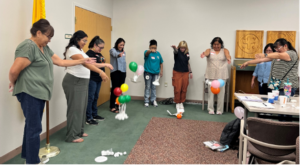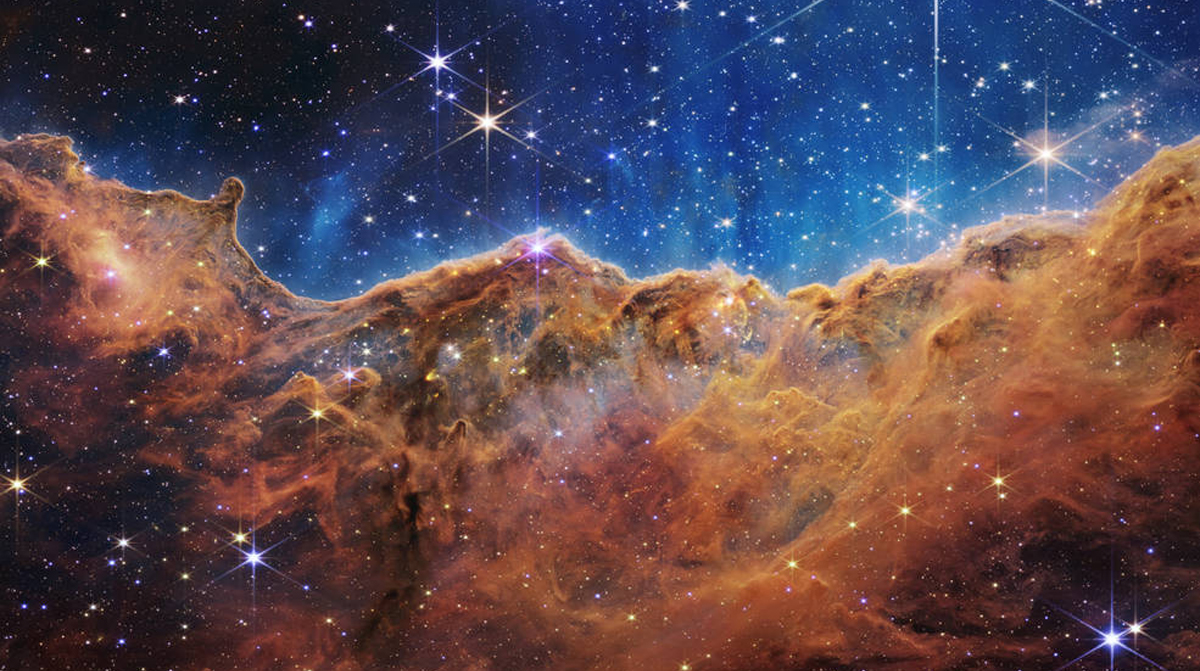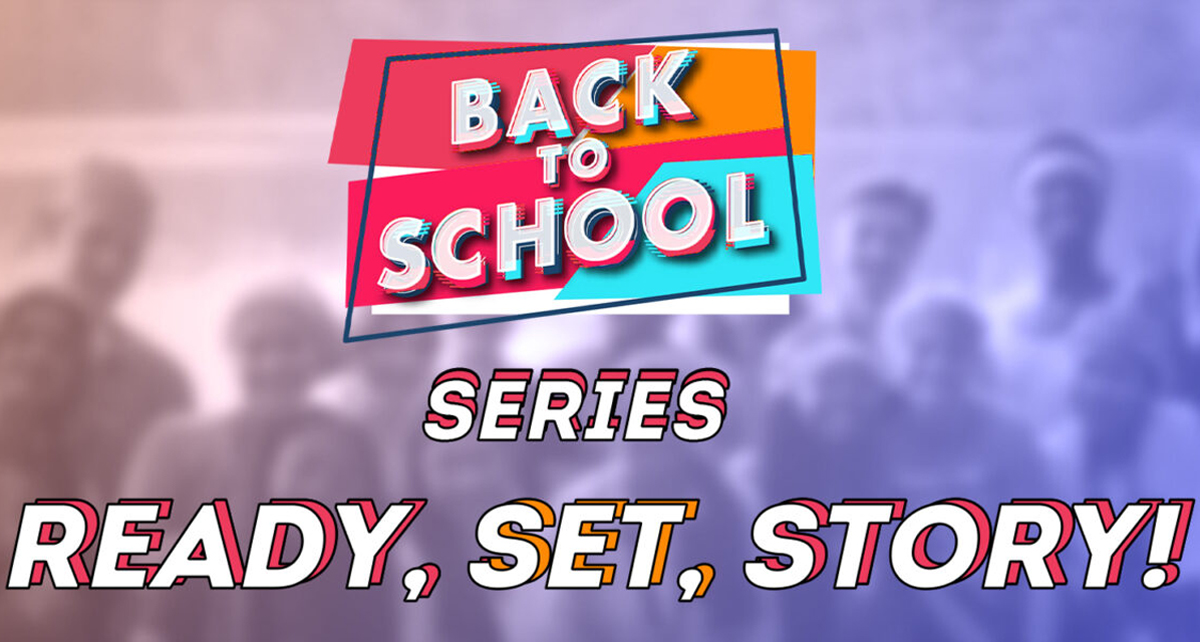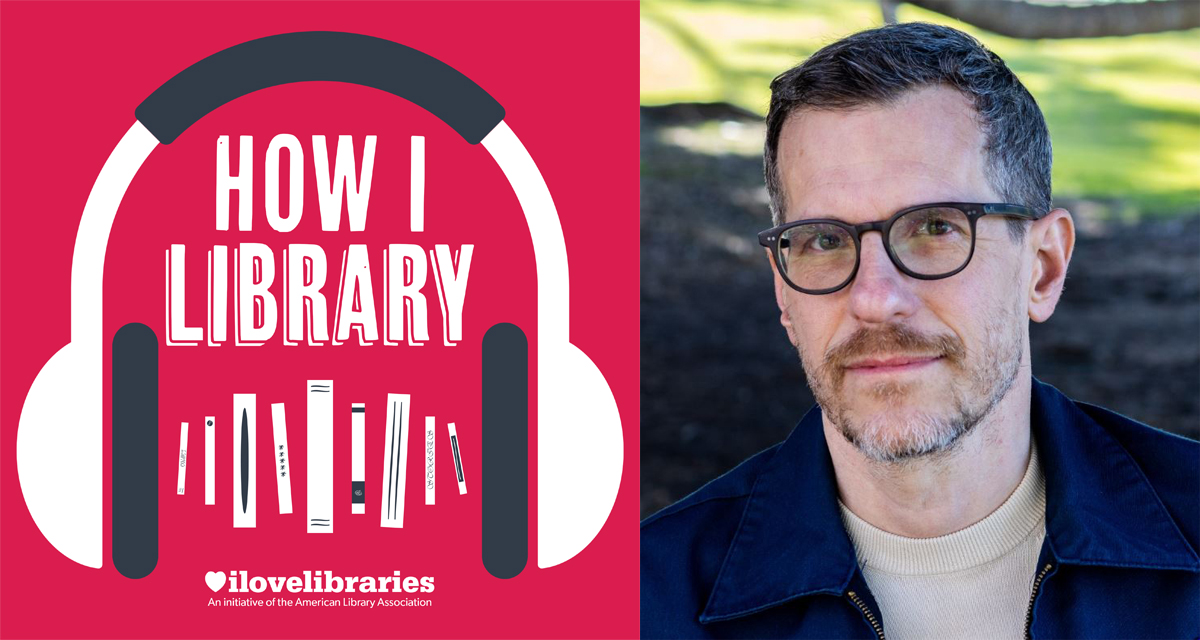Last week, the American Library Association (ALA) released its annual State of America’s Library Report, a look back at the previous year in the library world that highlights the ways libraries continue to meet the needs of their communities.
The report found that, despite growing pressure, library professionals and advocates stood strong for the freedom to read in 2024—continuing to provide essential services, support their communities, and drive innovation in libraries. The report is full of such success stories, from the Freedom Walks at Tom C. Clark High School in San Antonio, Texas, to Warren County (Ky.) Public Library’s work with LifeWorks at Western Kentucky University in Bowling Green, a 28-unit residential community for neurodiverse young adults.

Workshop participants conduct the “Touchdown” activity, simulating insertion of a rover into an unknown environment. Courtesy of NASA Science Editorial Team.
One story in particular that we loved learning about was the NASA@ My Library professional development workshop for Tribal libraries at New Mexico State Library last August.
The Space Science Institute’s National Center for Interactive Learning, in partnership with ALA, Cornerstones of Science, the Lunar and Planetary Institute, and the Education Development Center, leads the NASA@ My Library program.
Through the NASA@ My Library project, NASA, public libraries, and state library agencies work together to increase and enhance Science, Technology, Engineering, and Mathematics (STEM) learning opportunities for millions of library patrons throughout the nation, including geographic areas and populations that are currently underserved in STEM education.
Facilitated by Christine Shupla and Claire Ratcliffe Adams from the NASA Science Activation program’s NASA@ My Library project and with input from area Tribal libraries, the workshop led by the Co-Design Space STEM program explored an array of space-related programming and activities that libraries could adapt, from passive programming to physically engaging activities and even engineering design. Advisors also stressed the need to make the activities culturally relevant for their Tribal communities.
After a crater-creation activity, participants discussed replacing the materials with local materials and incorporating aspects of the local topography and even local art. Throughout the workshop, Shupla and Adams reiterated that the participants’ thoughts and input were critical—that they were the keepers of knowledge of their communities and that their voices were respected.
“I like how the instructors were reassuring throughout the session,” said one participant. “Making sure everyone was comfortable and making it feel safe to share ideas.” Another participant said, “I tend to not participate, but observe, because I’m not a scientist. It was awesome (feeling comfortable) to design too!”
Your support of the American Library Association helps make these programs—and many more like them—possible for thousands of librarians and library users across the United States. Become an ALA supporter today!
Become a Supporter
Subscribe to the I Love Libraries newsletter! You’ll get monthly updates on library news, advocacy updates, book interviews, book info, and more!
Image: The “Cosmic Cliffs,” the edge of a star-forming region in the Carina Nebula. Captured by the Near-Infrared Camera on NASA’s James Webb Space Telescope.




